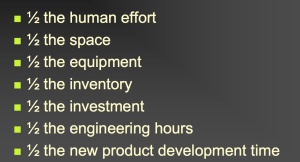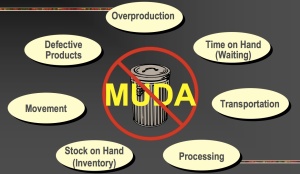Day 1 began with some introductions where everyone got to voice their expectations and fears. I was there to represent both the adult and pediatric ERs. [They will both be in the bottom of the new building] . My fear was that we could have a brand new ER, but unless the rest of the system is engaged in change … our patients will still be waiting in [albeit nicer] beds.
The rules of engagement:
The Saskatoon Health Region enlisted the support of John Black and Associates. Widely regarded as the best in the industry at this process. Together with the architects the JBA folks helped facilitate our genius. Ground rules they set were:
Innovate:
We saw how innovation [i.e. the process of thinking outside the box] plus design based on data gathering ultimately results in something that has the right form and function. Here’s the video about a California think-tank. It’s really inspiring!
Innovation requires chaos – you can’t use the current pattern of thinking. The best innovations come from enlisting diverse teams. It also requires an acceptance of all ideas and then repeated trial and error until the ultimate form/function evolves.
Ever wondered why your QI folks always want you to PDSA? … well that’s how innovation happens!
Eliminate Waste:
The 7 wastes “MUDA” when applied to health care are largely wait times, but we never stop to think about how far the patients [or us for that matter] walk about to achieve our tasks. We have one part of our current ER that is about 50 metres away from the main department! How about overstocking [tongue depressors because you couldn't find any once!] Ever done that? … umm …
Eliminating waste improves quality, safety and reduces cost. This is nothing new. Toyota has been doing it for decades. Other businesses have caught on and finally hospitals are looking to this new way of being [with good success].
The 7 Flows of Medicine:
The key to reinventing your processes is understanding the flow of patients, providers, medications, supplies, information, equipment and process engineering

In order to change processes, one must understand all that is involved in a patient encounter. Sounds complex? Well it is. You often hear that health care is a ‘complex beast to try and solve’. Well at least we now know what kind of beast it is. It’s a fish!

The Fish Diagram represents a patient encounter and all the things that go into supporting the treatment of that patient from start to fishnish!
Here’s a closeup of all the people involved

What it means is that before you begin systems re-design you have to know who all the players are and they have to be involved in the process because they all bring skills, equipment and time to bear on patient care. It also ideal if you have to have intimate knowledge of the process. I always joke:
Advertisement“AT VIRGINIA MASON, it’s hard to think outside the box if you don’t know what the box is”



No comments:
Post a Comment